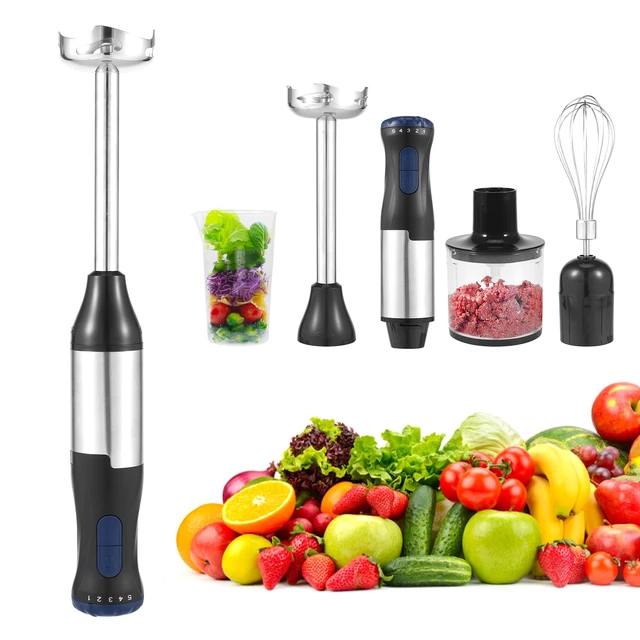
Introduction
When it comes to making smoothies, traditional countertop blenders are often the go-to appliance. However, you may wonder if an immersion blender, also known as a hand blender or stick blender, can be used as an alternative. In this guide, we will explore whether you can use an immersion blender for making smoothies, discussing the benefits, limitations, and techniques for achieving smooth and creamy results.

Can you use immersion blender for smoothie?
I. Understanding Immersion Blenders
-
Versatile Kitchen Tool:
- An immersion blender is a handheld appliance consisting of a motor at one end and a blending attachment at the other. It is convenient for pureeing, blending, and emulsifying various ingredients, providing flexibility in the kitchen.
-
Key Components:
- Immersion blenders typically consist of a motor housing, a removable blending shaft, and different types of blades or attachments. Some models also offer additional features, such as variable speed settings or attachments for chopping or whisking.
II. Benefits of Using an Immersion Blender for Smoothies
-
Convenience and Portability:
- Compared to countertop blenders, immersion blenders are more compact and portable, making them ideal for small kitchens or on-the-go use. They can be easily stored and require less countertop space.
-
Quick and Easy Operation:
- Immersion blenders offer a straightforward and hassle-free blending experience. With a simple press of a button, you can blend ingredients directly in the container, minimising the need to transfer liquids and clean multiple components.
-
Smoothie Customization:
- Immersion blenders allow you to have greater control over the texture of your smoothie. You can easily adjust the blending time and immersion depth to achieve your desired consistency, whether you prefer a smooth and creamy texture or a chunkier blend.
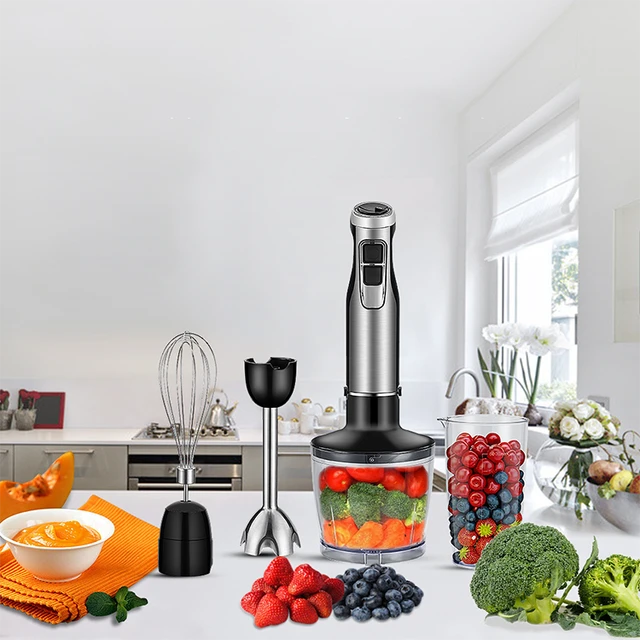
III. Limitations of Using an Immersion Blender for Smoothies
-
Capacity:
- Immersion blenders are generally suited for blending smaller quantities of ingredients. If you frequently make large batches of smoothies or have several servings to prepare, a countertop blender may be a more suitable choice due to its larger capacity.
-
Ice and Frozen Ingredients:
- Immersion blenders may have difficulty handling large ice cubes or frozen ingredients effectively. The blades and motor of immersion blenders are not always as robust as those of countertop blenders, making it more challenging to crush ice or blend frozen ingredients into a smooth texture.
-
Fiber and Seeds:
- Some immersion blender blades may struggle with tougher ingredients, such as fibrous fruits, tough greens, or small seeds. Inadequate blending can result in a grainy or less than desirable texture in your smoothie.
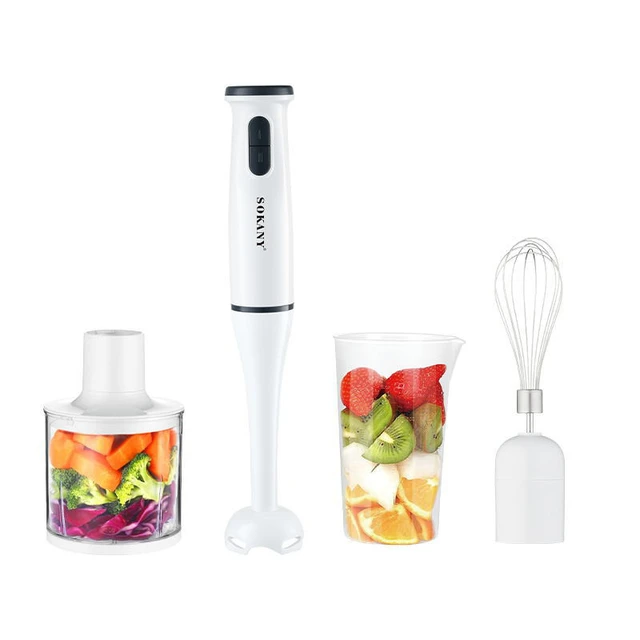
IV. Tips for Achieving Smooth and Creamy Smoothies
-
Prepping Ingredients:
- To ensure smoother blending, pre-cut ingredients into smaller pieces. This step is particularly important for denser foods like frozen fruits, large chunks of vegetables, or fibrous greens.
-
Liquid Base:
- Add a sufficient amount of liquid to the blending container before adding the other ingredients. This will aid the blending process and prevent the immersion blender from stalling or splattering.
-
Blending Technique:
- When using an immersion blender, it is advisable to move the blender up and down in a gentle, slow, and steady motion. This technique allows the blades to blend evenly and helps achieve a smoother consistency.
-
Gradual Blending:
- Start by blending the liquid and soft ingredients before gradually adding the more solid or challenging ingredients. This approach helps prevent strain on the immersion blender and ensures thorough blending.
-
Use Pre-Frozen or Smaller Ice:
- If you want to incorporate ice into your smoothie, consider using pre-crushed ice or smaller ice cubes. This choice makes it easier for the immersion blender to blend the ice effectively without straining the motor.
-
Soaking Seeds or Nuts:
- If you plan to blend seeds or nuts into your smoothie, consider soaking them in water beforehand. Soaking helps soften their texture and makes them easier to blend with the immersion blender.
V. Optional Accessories and Attachments
-
Blending Containers:
- Some immersion blender models come with additional blending containers or cups, allowing you to blend directly into a portable container for on-the-go convenience.
-
Whisk Attachment:
- Certain immersion blenders offer a whisk attachment that can be useful for incorporating air into your smoothies or whisking ingredients such as egg whites or cream.
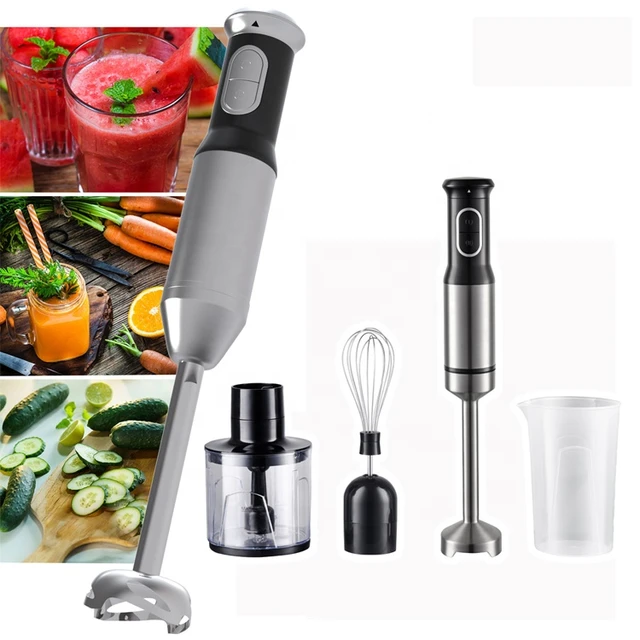
VI. Cleaning and Maintenance
-
Detachable Parts:
- Most immersion blenders have detachable blending shafts or blades that can be easily removed for cleaning. Follow the manufacturer’s instructions for cleaning and maintaining these parts.
-
Motor Housing:
- Clean the motor housing of the immersion blender by wiping it with a damp cloth. Avoid submerging the motor housing or exposing it to water.
VIII. Comparing Immersion Blenders and Countertop Blenders
-
Immersion Blenders vs. Countertop Blenders:
- It is worth comparing the capabilities and features of immersion blenders with those of countertop blenders to determine which option better suits your smoothie-making needs.
-
Capacity and Batch Size:
- Countertop blenders generally have larger capacity jars, making them suitable for preparing multiple servings or larger batches of smoothies. If you frequently make smoothies for multiple people, a countertop blender may be more efficient.
-
Power and Motor Strength:
- Countertop blenders typically have more powerful motors compared to immersion blenders. This allows them to handle tougher ingredients, crush ice more effectively, and maintain consistent blending power throughout the entire jar.
-
Texture and Consistency:
- Countertop blenders tend to provide smoother and velvety textures due to their powerful blades and higher speed settings. If achieving a perfectly smooth texture is crucial to your smoothie enjoyment, a countertop blender may be the preferable choice.
-
Additional Functions:
- Countertop blenders often offer more versatility with various speed settings, pre-programmed cycles, and additional functions such as grinding spices, making nut butters, or even heating soups. If you require a blender that can handle multiple tasks beyond smoothie making, a countertop blender might be the better option.
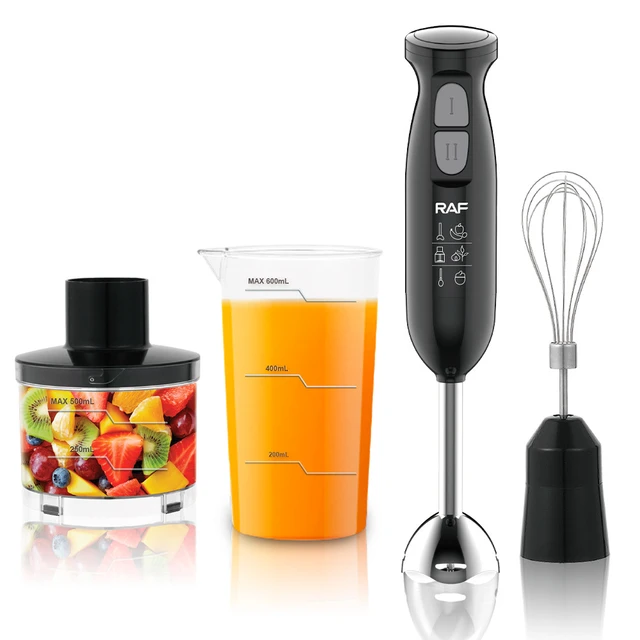
VII. Conclusion: Immersion Blenders and Smoothie Making
Using an immersion blender for making smoothies is possible, but it comes with certain limitations. While immersion blenders offer convenience, portability, and customization options, they may struggle with large batches, ice crushing, and blending tougher ingredients.
To achieve smooth and creamy smoothies with an immersion blender, ensure proper ingredient preparation, use a liquid base, employ blending techniques, and consider optional accessories or attachments. While immersion blenders may not match the power or capacity of countertop models, they can still provide satisfactory results for smaller quantities and simpler recipes.
Consider your specific smoothie-making needs, the desired texture, and the frequency of use before deciding whether an immersion blender is the right choice for you. By understanding their capabilities and following the provided tips, you can enjoy the convenience and versatility of an immersion blender for your smoothie creations.